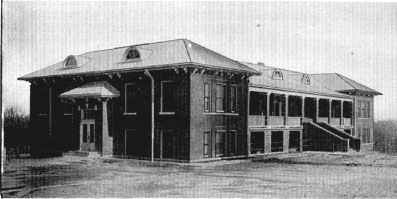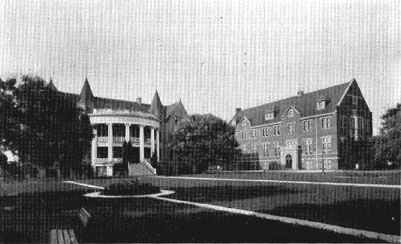![]()
WELFARE COMMISSION The Nebraska Conservation and Public Welfare Commission, under which the Bureau of Publicity operates, was established by legislative enactment in 1913. The commission consists of the Governor of Nebraska, the Chancellor of the State University, the Director of the Conservation and Soil Survey, the Secretary of the State Board of Agriculture and the Director of the Legislative Bureau. The Nebraska Conservation and Soil Survey, which is a part of the Public Welfare work, was established at the same time. The purpose and duties of the Conservation and Public Welfare Commission are outlined by the statutes as follows: |
![]()

Hospital, Soldiers' and Sailors' Home The legislature of 1917 amended the Public Welfare act by providing for the appointment of a Director of Publicity and an appropriation of $12,500 made for its maintenance during the biennium. In accordance with the amended act Governor Neville, with the approval of the other members of the commission, appointed Will M. Maupin to be Director of Publicity. The Publicity Department is now located in commodious quarters in the State House. Nebraska's real place among the apple producing states is not well enough known. While other states have been advertising and thereby reaping valuable advertising, Nebraska has been content to raise the apples and reap profits. It is only recently, however, that Nebraska apple raisers have been giving especial attention to production and scientific marketing. For many years men who set out apple orchards were content to let "nature take its course," and as a result orchards deteriorated and apple raising received a "black eye." The State College of Agriculture gave especial attention to this branch of production, and several years ago young men, graduates of the school, engaged in the industry and gave it intelligent application. They soon demonstrated that an apple tree, like a dairy cow or a work horse, would respond to kind treatment. Under the guidance many old orchards were pruned, sprayed and cultivated, and the natural result was more and better apples. But it was not enough to produce the apples. There still remained the problem of marketing. For years "apples were apples" in the opinion of the producers, and they were hauled to town and dumped indiscriminately into box cars for |
![]()
 |
 |
 |
© 2002 for the NEGenWeb Project by Pam Rietsch, Ted & Carole Miller
